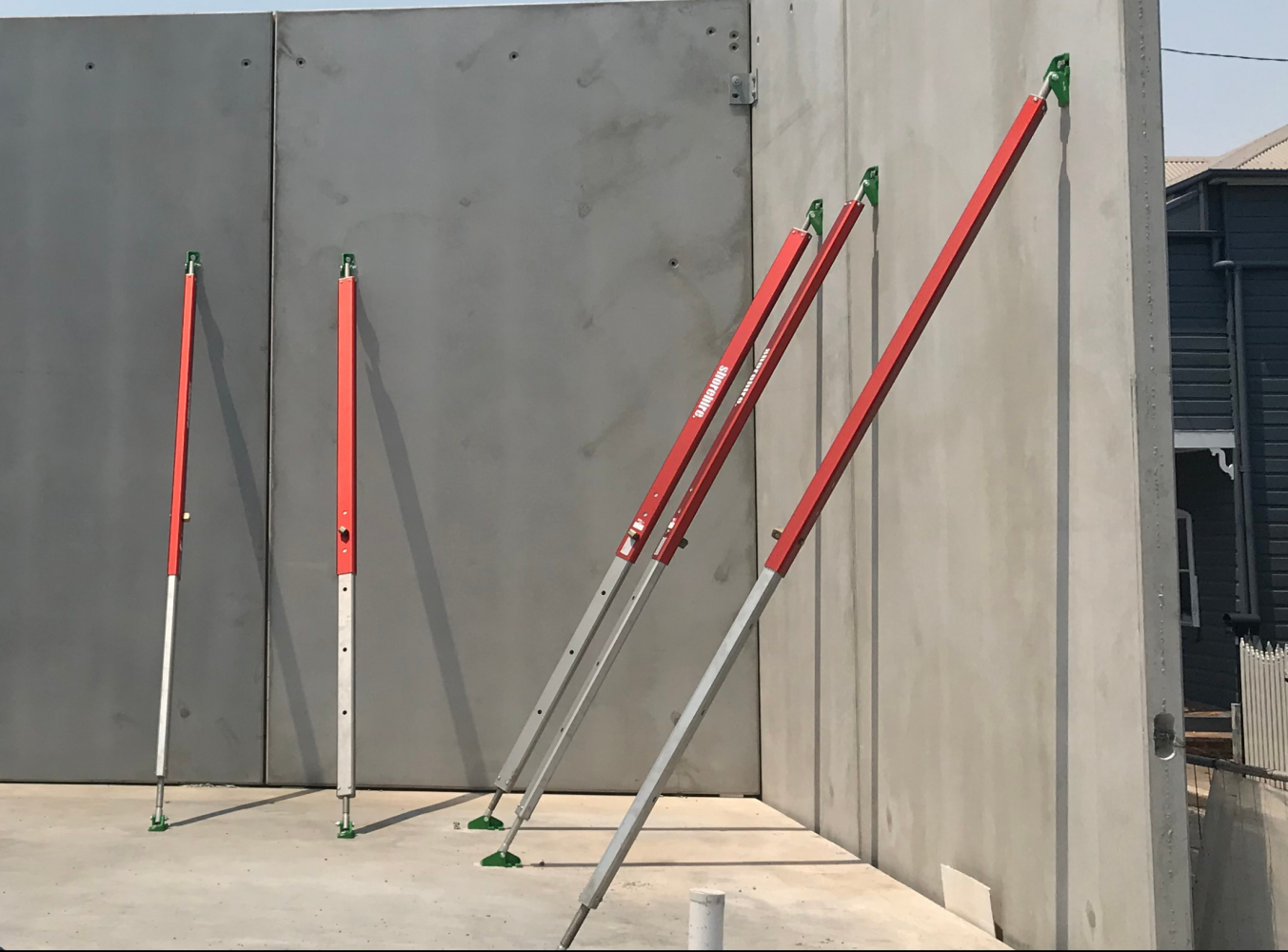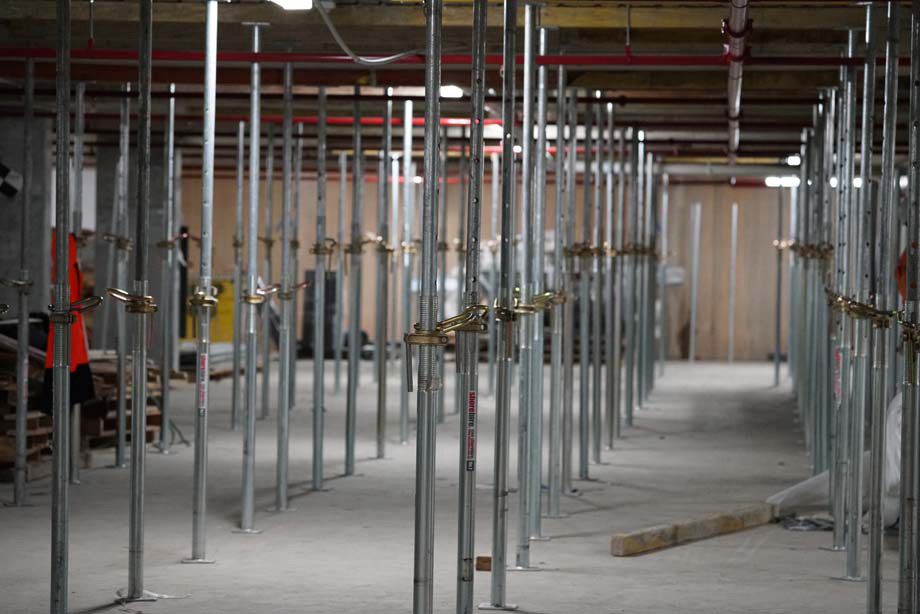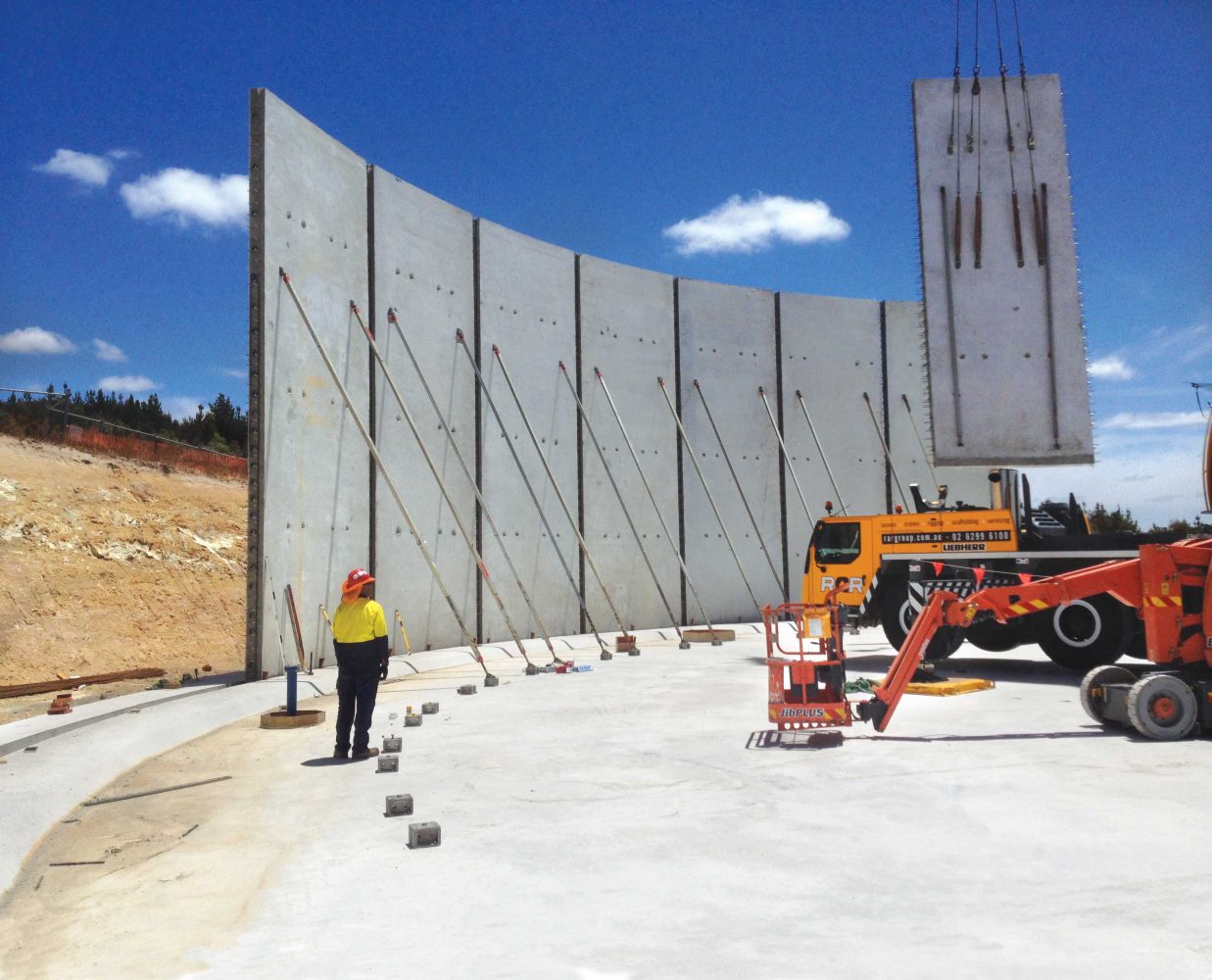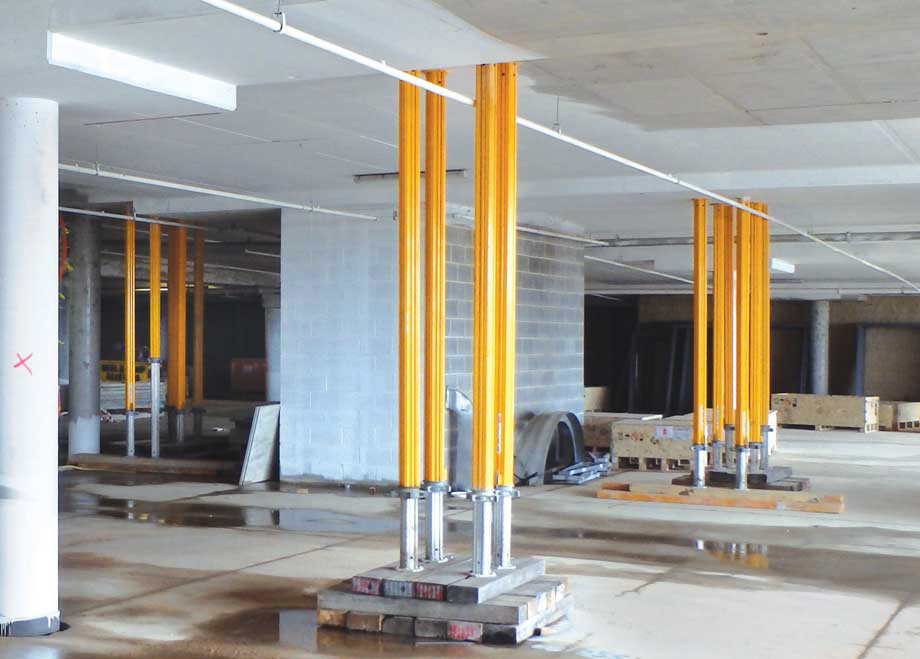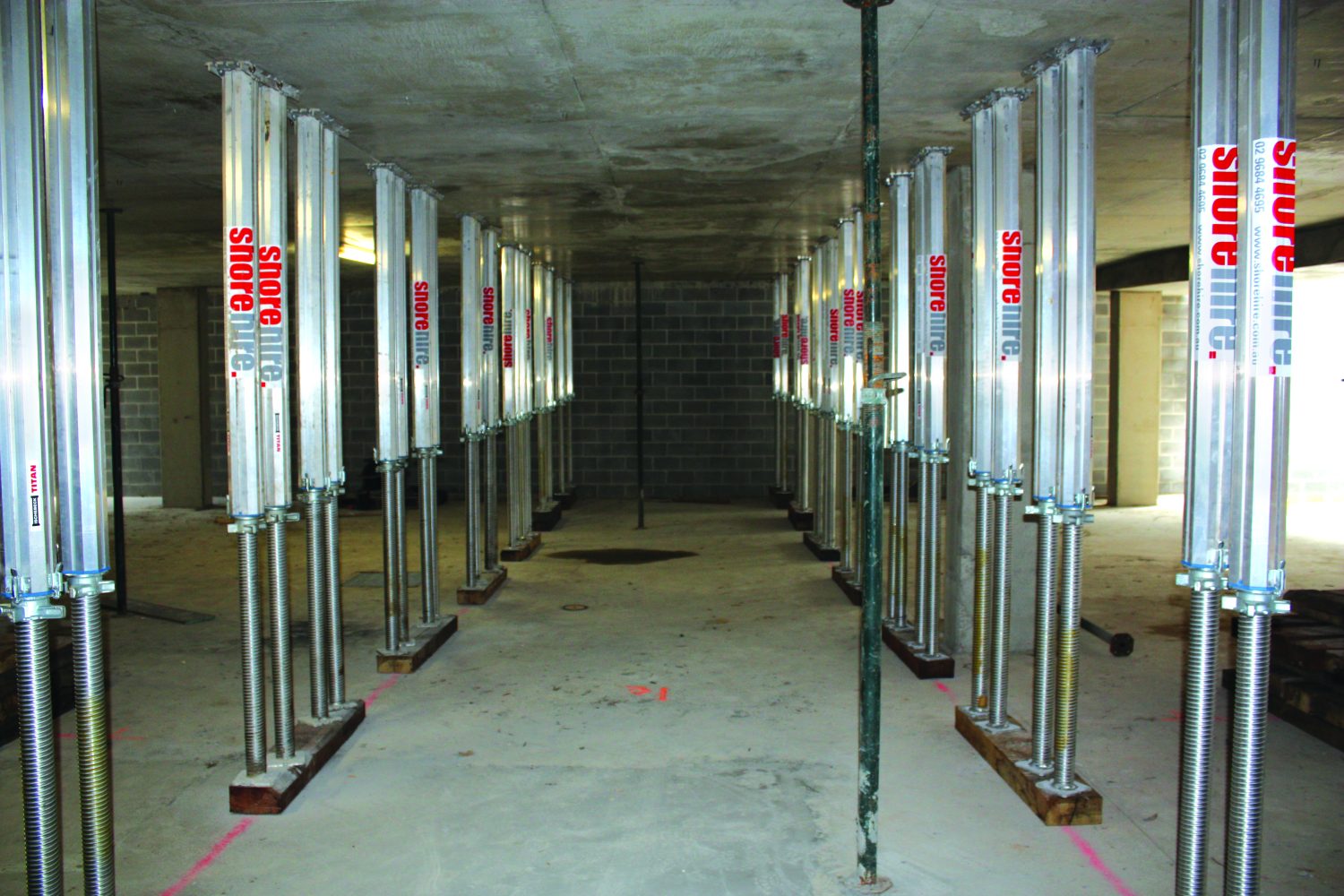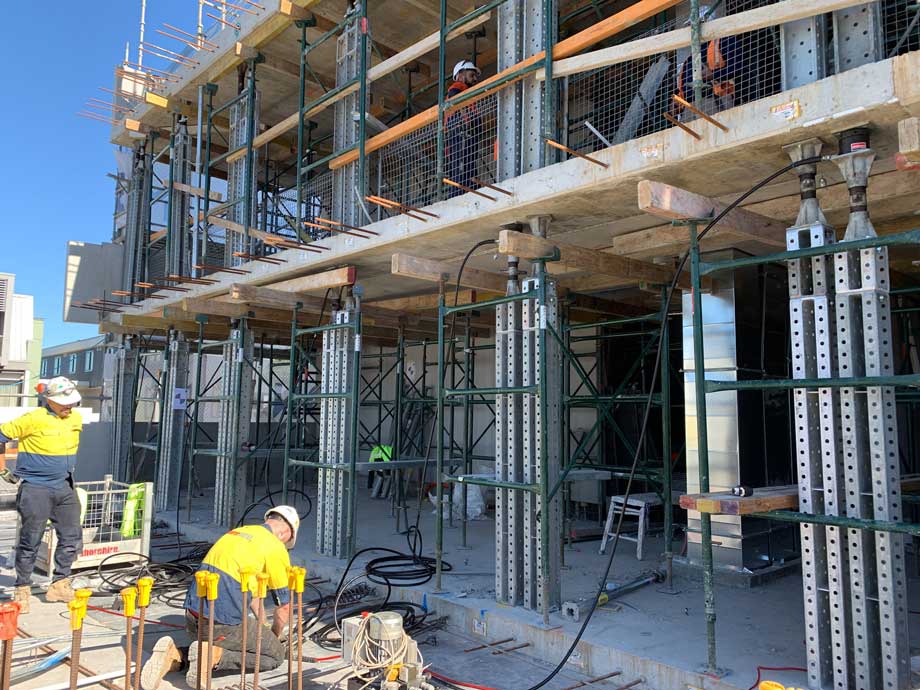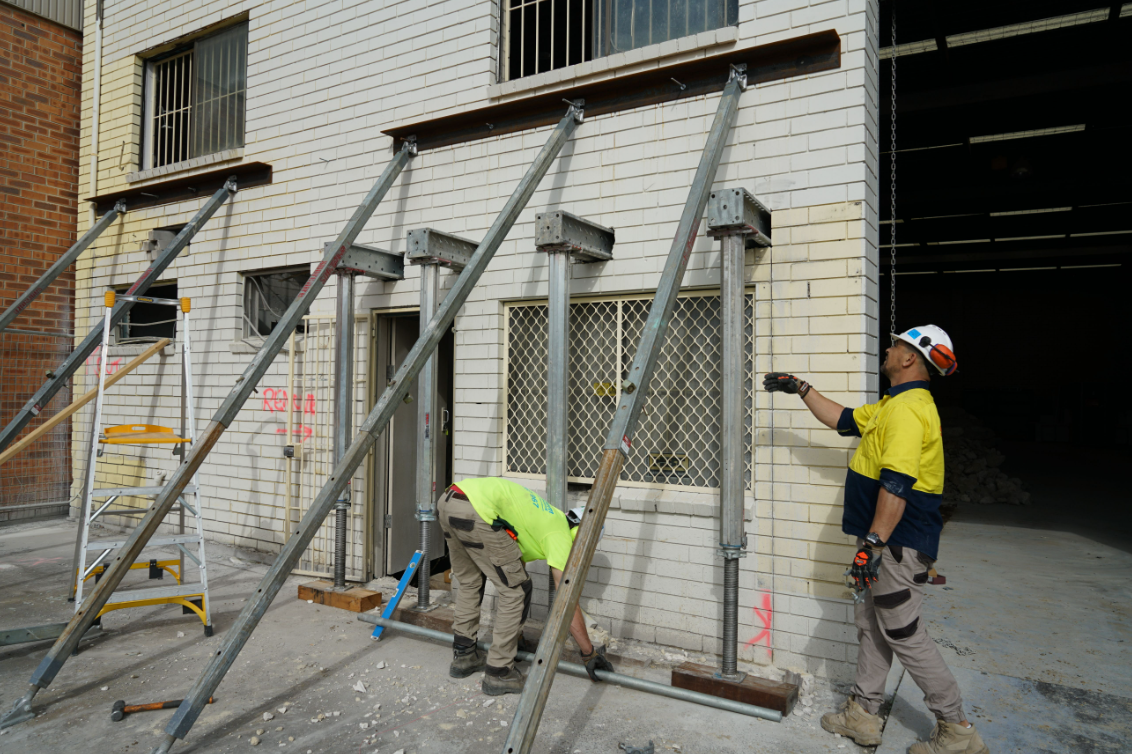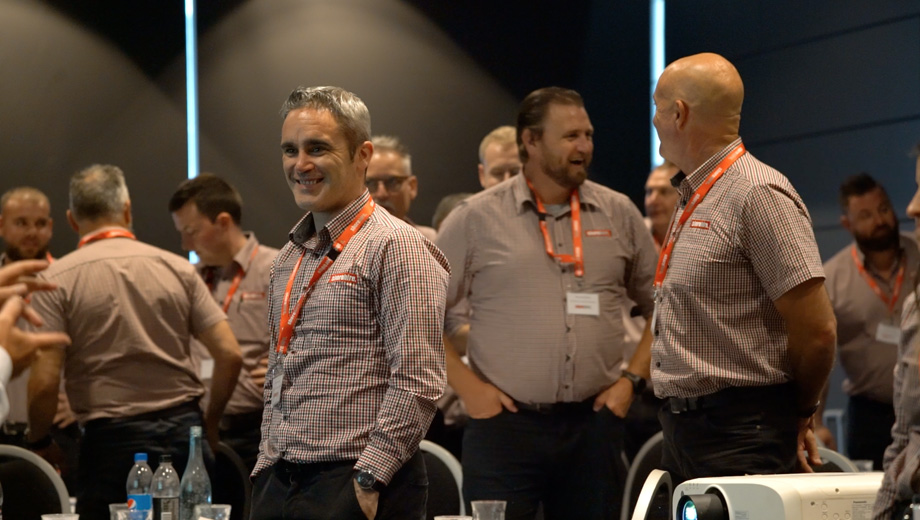Home Blog Product Info 8 ways to use temporary props
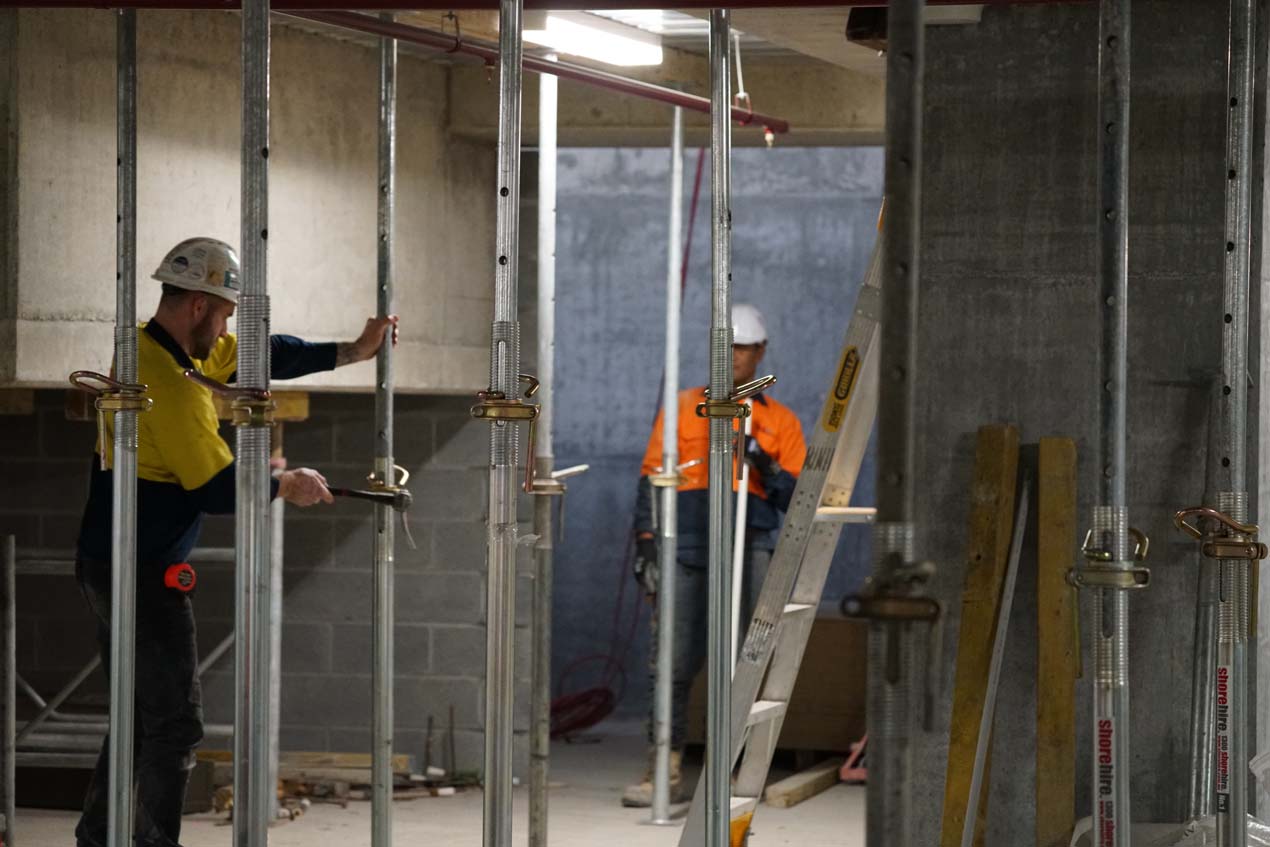
Temporary Propping, also sometimes referred to as a temporary propping system or temporary propping solution, is a common construction methodology that involves the design and installation of a temporary structural support system to support any sort of existing structure while nearby works are undertaken.
Temporary propping involves a variety of applications and the below article will touch on just a few ways our temporary props can be used to achieve great results.
Retaining walls
Retaining walls are a very common propping application and one that we get asked for regularly, depending on the height and type of retaining wall being propped, the type of prop and how many need to be installed will vary. At a very basic level propping a retaining wall will involve running raking props from the retaining wall down to a solid concrete footing which transfers the loads from the wall through the prop and down to the footing. Our team of on-site riggers can take care of the full install and dismantle process and we have a team of expert in-house engineers who can complete the full temporary works design for this application.
Back propping
Back propping is quite a generic term, but in temporary propping applications, it refers to the vertical transfer of loads, sometimes through multiple stories through to the ground slab, this is often to allow for high loads such as cranes or heavy plant to be able to track across suspended slabs without impacting the integrity of the concrete they’re sitting on/moving across. We have a number of propping systems that can be used for this application ready and available for hire across our now 4 state-wide branch network.
Façade retention
Façade retention is again quite a generic term that just refers to keeping elements of a structure, more specifically a building, intact while works take place around what’s being retained or propped, this is especially common on heritage-listed buildings where no demolition can take place in certain areas. Façade retention applications are often very unique and require bespoke solutions, our team of experts can help you from initial discussions all the way through to design, hire, install, and dismantle for this application.
Uplift reduction
A less common but still very important application where propping is required is in uplift reduction. By transferring the load from where there is potential uplift down to the ground, in, for example, an open-air shed or awning, you reduce the chance of uplift, protect the structure, and minimise the danger for others. Enquiries around temporary propping solutions for uplift reduction often increase during storm season as extreme weather events are often when failures due to uplift can occur but uplift still remains a problem year-round, so if you want to learn more about this, then get in touch with us today.
Push/pull or tilt bracing for pre-cast panels
Tilt Props, which are often referred to as push/pull props in the Australian market, are one of the most common temporary propping applications and relate to the erection of pre-cast concrete panels. Propping designs for pre-cast panels are necessary to account for wind loading while they set. We have a huge range of tilt props to suit this application, from 1.2m up to 10.4m and much further beyond with our modular propping systems. Traditional tilt props are made from steel, which can be very heavy to manhandle but after years of research and development, Shore Hire has proudly designed, manufactured and taken to market a new lightweight aluminium tilt prop, which is perfect for this application.
Formwork applications
Formwork propping applications relate to the supporting of suspended slabs while the concrete is poured/set. The propping system for this application typically involves lightweight evenly spaced vertical props that are relatively fast and easy to install. We have a full range of lightweight vertical props suitable for formwork applications, so get in touch today to find out more.
Lintel fittings and removals
The fitting and/or removal of lintels and beams can be a tricky task but with a ‘strong boy’ prop, which is specifically designed for this application, it is instead a very easy and efficient process. We also have a full in-house team of engineers as well as on-site riggers to support you with this application if required.
Pole propping
Propping power poles, or any type of pole for that matter, can lead to big cost savings by avoiding the need for a pole grab truck. Shore Hire has designed and developed our own custom power pole clamps for this application, and the system will generally involve multiple tilt bracing props at adjacent axis running to either a solid footing or temporary counterweight system to support the pole while work is taking place nearby. If shoring is also required on this application, Shore Hire can provide the full solution for the entire job, so if you require this service or any of the above or just want to learn more, then get in touch with our expert team today.
